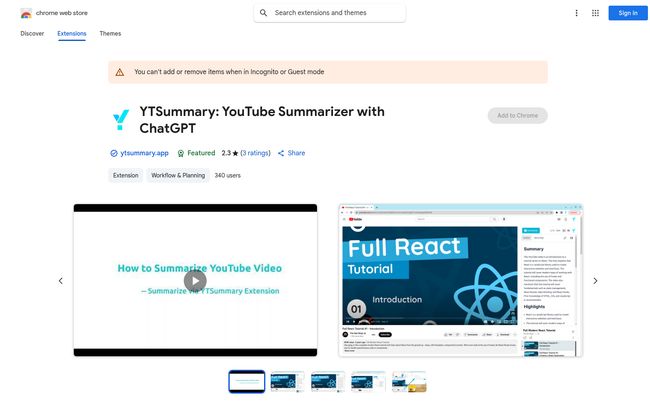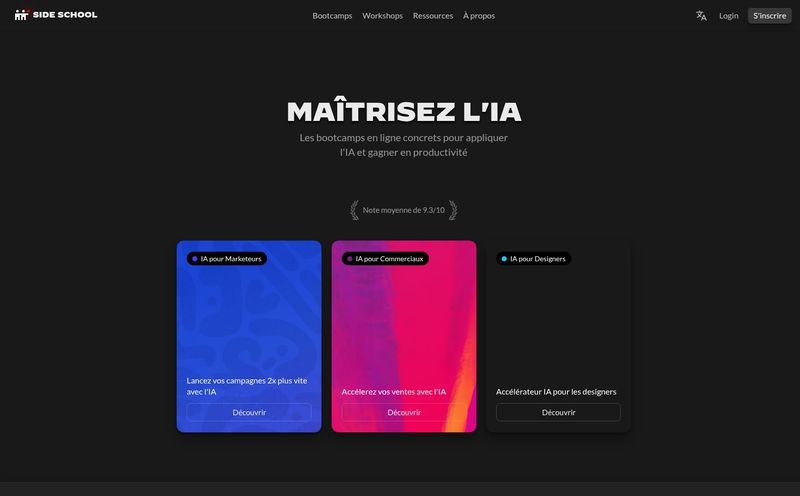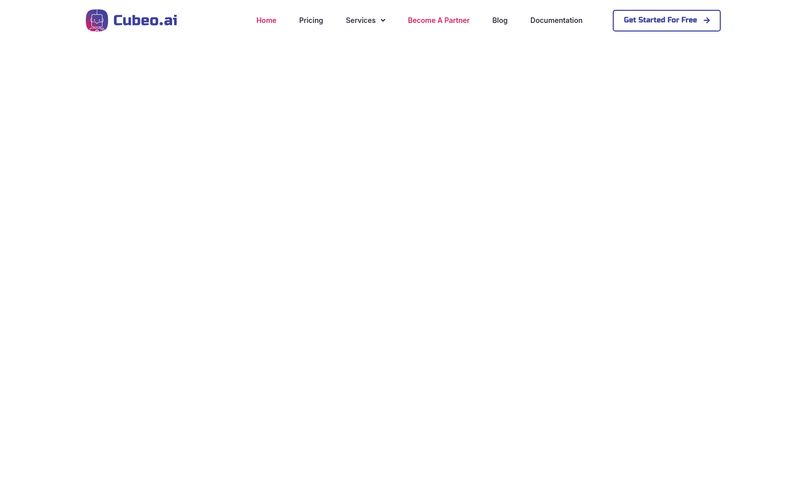We've all been there. You click on a YouTube video with a promising title—"The Ultimate Guide to SEO in 2024" or "Master React in One Video." An hour later, you've learned a few things, but you've also sat through ten minutes of rambling intros, five minutes of sponsor reads, and a whole lot of filler. Your time is precious. As someone who lives and breathes digital content, I feel this pain in my bones.
The internet is an incredible library, but a lot of the books are... verbose. For years, my process was to watch videos at 2x speed, constantly skipping ahead, trying to find the golden nuggets of information. It's exhausting. It’s inefficient. So when I see a tool that promises to fix this, my ears perk up. Enter YTSummary, a Chrome extension that claims to use the power of ChatGPT to give you the gist of any YouTube video, instantly.
But does it actually work, or is it just another bit of AI hype? I decided to take it for a spin. And I have some thoughts.
So, What is YTSummary Exactly?
At its core, YTSummary is a bridge. It connects the long-form content on YouTube with the powerful language processing of OpenAI's ChatGPT. Once you install the Chrome extension, a small summary box appears next to any YouTube video you’re watching. With a click, it takes the video's transcript and feeds it to the AI, which then spits out a concise summary. Think of it like the CliffsNotes for the YouTube generation. You get the main points, the key arguments, and the core concepts without having to scrub through the timeline yourself. It’s like having a super-smart intern who watches videos for you and just gives you the bullet points. An intern that doesn't need coffee breaks.
The Features That Actually Matter
Any tool can claim to summarize text. The magic is in the execution. What I found interesting about YTSummary wasn’t just that it summarizes, but how it does it. It offers a few different ways to digest the information, which caters to different learning styles.

Visit YTSummary
Not Just a Wall of Text: Outline and Mind Maps
This was the first thing that caught my eye. Instead of just giving you a dense paragraph, YTSummary can break a video down into an outline. This is fantastic for structured content like tutorials or lectures. You can see the logical flow of the video at a glance. But the real star of the show for me is the mind map option. It takes that outline and turns it into a visual diagram. As a visual learner, this is a godsend. It helps my brain connect concepts in a way that a simple list just can't. It's the difference between reading a recipe and seeing a cooking show—one just clicks better.
Tackling the Titans: Long Video Summaries
I immediately threw a two-hour podcast episode at it. You know, the kind of deep-dive interview that’s packed with insights but also has its fair share of conversational detours. The free plan has its limits here, but the paid plans handle these behemoths without breaking a sweat. Being able to get a coherent summary of a long-form interview or a complex webinar is, frankly, a game-changer for professional development and research. It lets you quickly decide if a piece of content is worth your full attention.
Speaking Your Language and Sharing Your Notes
The tool also supports multiple languages for the summaries, which is a thoughtful touch for a global platform like YouTube. And once you have a summary you like, you can easily export it as a PDF or an image. I’ve already started saving mind-map summaries of marketing talks into my research folder. It's much more effective than a bookmark I’ll never click on again. The ability to quickly share these summaries with a colleague or a team is also a nice collaborative touch.
The Good, The Bad, and The AI
No tool is perfect. Let's get into the nitty-gritty. After a few days of use, here’s my honest breakdown.
What I Really Liked
The time-saving aspect is undeniable. It's the core promise and it delivers. I was able to vet a dozen videos for a research project in the time it would have normally taken me to watch two. The multiple summary formats—especially the mind maps—are brilliant. It shows the developers understand that people learn in different ways. And having a free plan, even a limited one, is a huge plus. It lets you kick the tires and see if the tool fits your workflow before you open your wallet.
A Few Quirks to Note
Okay, let's address the elephant in the room. If you check the Chrome Web Store, you might see a pretty low star rating. I saw it too, and I wont lie, it gave me pause. However, with only a handful of ratings, I suspect it's more a reflection of a new tool finding its footing than a fatal flaw. Every new extension has teething problems.
The other odd thing is the process for upgrading your plan. The documentation mentions that it requires some manual intervention. In 2024, that feels a bit old-school. You'd expect a fully automated process. It's not a dealbreaker, just a strange little wrinkle in an otherwise modern tool. Also, the free plan is quite limited, capping you at 10 summaries total for short videos. It's enough for a test, but you'll hit that wall pretty fast if you like it.
Let's Talk Money: YTSummary Pricing
The pricing structure is straightforward, which I appreciate. No confusing credit systems or hidden fees. Here’s how it breaks down:
| Plan | Price | Key Features |
|---|---|---|
| Free | $0 | 10 summaries total, for videos under 30 minutes. |
| Basic | $9 / month | Up to 200 summaries per month, for videos under 4 hours. |
| Pro | $15 / month | Unlimited summaries, any video length, priority support. |
In my opinion, the $9 Basic plan is the sweet spot. Two hundred summaries a month is more than enough for most students, researchers, or professionals. The Pro plan at $15 is really for power users—journalists, content curators, or academic researchers who are processing massive amounts of video content daily.
Who is This Tool Really For?
I can see a few groups getting a ton of value out of YTSummary:
- Students and Researchers: Imagine summarizing hours of lectures or documentary footage in minutes. It’s an academic superpower.
- Content Creators: Need to research a topic? Quickly get the gist of what competitors are saying. It's also great for repurposing your own long-form content into blog posts or social media threads.
- Busy Professionals: Want to stay up-to-date on industry trends from conference talks or webinars but don’t have 8 hours to spare? This is your solution.
- The Casually Curious: Anyone who loves learning but gets frustrated by slow-paced videos will find a friend in this tool.
My Final Verdict: A Time-Saver or a Gimmick?
So, back to the original question. Is YTSummary worth it? Yes, with a small caveat.
It is an absolutely fantastic time-saver. It successfully solves the problem it sets out to fix. It cuts through the fluff and delivers the core information in a digestible format. For me, the ability to quickly vet a video's content before committing to watching it is worth the price of admission alone.
The caveat is this: An AI summary is not a replacement for deep engagement. If you're trying to learn a complex, nuanced skill, you still need to watch the video, absorb the details, and see the examples. The AI gives you the map; you still have to take the trip. But for quickly understanding concepts, reviewing information, or deciding what to focus on, YTSummary is an incredibly powerful addition to my toolkit. It’s earned its spot on my Chrome toolbar.
Frequently Asked Questions about YTSummary
- Is YTSummary really free?
- Yes, there is a free plan. It gives you a total of 10 summaries for videos that are less than 30 minutes long. It's a great way to try out the service and see if you like its features like the outline and mind map mode.
- How does YTSummary use ChatGPT?
- It works by taking the full text transcript of a YouTube video and sending it to the ChatGPT AI model through an API. ChatGPT then processes that text and generates a concise summary based on the key topics and points it identifies.
- Can YTSummary handle videos in languages other than English?
- Yes, it supports multiple languages. You can get a summary of a video that's in another language, and you can also request the summary itself to be written in a different language from the video's original audio.
- What's the difference between the summary formats?
- Outline mode gives you a structured, hierarchical list of the video's main points, like a table of contents. Mind Map mode turns that outline into a visual diagram, which is great for seeing connections. Segment mode breaks the summary down based on the video's chapters or key moments identified by the AI.
- Is my data safe when I use YTSummary?
- According to their privacy policy on the Chrome Web Store, the developer states they do not collect or use your data, nor is it sold to third parties. As always, it's good practice to review the privacy policy of any extension you install.



